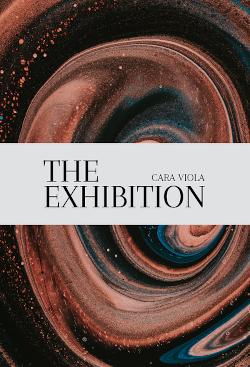 Set in the earliest days of the 1900s, this exquisitely immersive novella by Cara Viola invites you to stride into the archives of Glasgow’s glorious Kelvingrove museum when it has been built but is yet to be filled with treasures.
Set in the earliest days of the 1900s, this exquisitely immersive novella by Cara Viola invites you to stride into the archives of Glasgow’s glorious Kelvingrove museum when it has been built but is yet to be filled with treasures.
Our guide is 19-year-old Madeleine, a young woodworker with a talent for recreating priceless artefacts, who arrives rain-drenched on pages soaked in Carla Viola’s lyrical writing.
We soon learn three things about Madeleine: she is from Great Yarmouth, the only thing she will miss is ‘her’ marsh, and she keeps secrets, a fact told sideways as she meets Mrs Deepdene, the wife of Madeleine’s employer (and a formidable character in her own right). Madeleine “tried to see the other woman’s face, to gauge whether she, too, would be someone who kept secrets.”
The Kelvingrove museum feels equally ripe for secrets, breathed into life by the author’s vivid writing: “From the shadows of the Gothic tradition, the structure rose into the sky, where, at a tremendous height, solid walls divided into many-armed turrets (…) The door had not been locked since the last workman left, yet nobody wanted to venture inside. Kelvingrove was a building lying in wait.”
From the new and temperamental electric lighting to the mysterious detail that Madeleine’s parents are “on that boat to America”, to the clamour of Argyle Street below, with its trams, horses and “veritable concert” of voices, an era of wonder is brought scintillatingly to life.
For anyone with an affection for the Kelvingrove, or for that matter any museum, the chance to meander there and take in the space is a treat too. Viola has the ability to portray Madeleine’s surroundings in a way that makes them seem an arm’s stretch away – you can almost touch the carved balconies and inhale the icy air of these largely empty rooms.
Running beneath the elegant descriptions is a current of threat from Madeleine’s past: “It was always the same men who came calling at her parents’ cottage. She recognised them from the way they walked, their tread on the floor, even though she had never seen their faces. (…) Madeleine knew they could find her in Glasgow too. Perhaps they had done so already.”
And while Glasgow itself, not to mention the glowing new Kelvingrove, provide a richly textured backdrop, it’s Madeleine, with her mysterious past and fearful present yet absolute pleasure both in nature’s wonders and in each “cultural treasure” made, copied, and even falsified, by humans, who kept me glued to the pages.
Madeleine is a deeply thoughtful protagonist, wondering about identity, both of people and of artefacts: “Does the climate shape a people—does geography? (…) What did that mean for her? If geography shaped identity, who was she, after all?”
Each of the people Madeleine encounters surpasses her expectations, but it’s Madeleine who kept me guessing, and marvelling. She’s a master craftsperson who draws us into her passion for her art as much as her creator, Cara Viola, draws us into her story.
An absorbing coming-of-age novel full of intrigue, heritage and beauty that will cloak you in a history you can still visit simply by stepping into Glasgow’s Kelvingrove Gallery today. Irresistible.
The Exhibition by Cara Viola is published by Greenteeth Press and is available to buy here.
